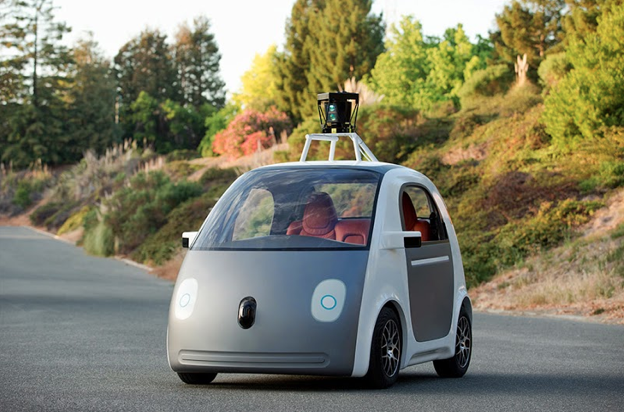Vehicle theft is a huge industry. It can cost fleets across the globe billions of pounds a year in lost revenue, stock and property. Unfortunately, due to their cargo and the often expensive equipment stashed inside, fleet vehicles can be highly attractive targets. But how can you stop criminals from targeting your fleet?
The short answer is that you can’t. Fleets, particularly those that are utilised by well-known manufacturers and large enterprises, will always be subject to crime because of the opportunities they represent. What you can do, however, is mitigate the level of risk to your fleet.
With recent advances in technology, it’s no longer as simple as using common sense and parking in high-security areas, although these do help. What fleet managers around the globe are advising is multi-layered strategy incorporating the low, and hi-tech, resources available.
In regards to fleet management, automotive theft is no longer just the theft of the entire vehicle, but a range of crimes spanning from the more opportunistic smash and grabs to using advanced and comprehensive telematics data to case a business, or just using the vehicle to perform other criminal enterprises. In that regard, it makes sense that your security should be equally layered.
Over the course of this article, we’ll articulate how to slowly build up your security to cover the opportunistic, to the more insidious.
Stop Smash & Grab Theft
This type of theft is normally unplanned and purely opportunistic. Targeting vehicles when drivers are otherwise occupied making deliveries, making service calls or picking up cargos, these thieves rely on fleet drivers being too focused on completing their tasks to realise they may have left their doors unlocked or windows wound down. Whether it’s a personal phone, a company laptop, or even expensive telematics equipment, thieves only need a second to grab the valuables and take off.
One of the easiest ways to deter these kinds of crimes is to darken the tint on the windows of your fleet vehicles, to the extent of the legal limit. Smash and grabs work under the premise that there will be a reward for the effort of breaking in, by robbing criminals of that sureness, you are greatly reducing the risk. Similarly, fitting safety glass and shatter-resistant window film will reduce the risk of your windows shattering and providing an easy entry point.
For heavy duty smash and grabs, for criminals that specifically target fleet vehicles for theft, vehicle caging is a valuable deterrent. With a heavy duty internal cage, it’s best to leave your windows untinted, so criminals can see that the effort of breaking in, is by no means worth the payoff.
Alongside installing caging and fitting protective windows, there are a few other, perhaps more common sense, approaches that drivers, supervisors and fleet managers can take that can be equally effective when used in conjunction with the above.
This isn’t rocket-science, although can be a pain whilst on a long route, one of the best approaches is to simply remove all valuable contents out of the vehicle whilst it is not in operation, or, hide them from sight whilst on the job.
If your drivers have to carry around expensive equipment and tools, investing in specially built compartments, or tool boxes constructed out of heavy, solid materials, with layers of added protection such as hardened steel locks, are a great deterrent and well worth the initial cost. It’s also wise to mark your tools discretely so they are easier to trace and identify if they do get stolen.
Similarly, if your drivers do share vehicles, don’t install key lock boxes within the vehicle. Although this does save time, the time it saves is minimal in comparison to the potential risk of leaving your keys in easy reach for savvy criminals.
Finally, don’t be afraid to use the security that comes with your car. Remind your drivers to always keep their windows up and doors locked, even if they think they’ll only be out of the car for a minute.
But whilst these may deter low-risk criminals. How do you protect your fleet from targeted vehicle theft?
Layered Protection
In the introduction, we mentioned the importance of a layered approach. The simplistic approaches above will help to deter criminal activity, but consider them only the bedrock of your protective strategy.
The second step is to install visible deterrents on the vehicles to indicate that the theft will be far too difficult to be worth attempting. Although cages go some way towards this, they can be broken through using machinery. These next deterrents should be far less passive and actively work towards protecting your vehicle from theft.
Take advantage of technology like security lights, signage, steering wheel locking bars and automated immobilisation devices.
Security lights are simply flashing or blinking, lights that communicate your fleet vehicle has a security alarm. If your alarm system didn’t come with these, then you can purchase and install them separately. Signage works in a similar way, simply including a sign that tells potential thieves that your vehicle has integrated security can be enough to dissuade them.
Steering wheel lock bars that prevent the rotation of the steering wheel, especially if they have additional hardware that prevents the breaking into of the steering column housing are cost effective and invaluable. Brake locks are also equally useful.
Other, more hi-tech, immobilisation devices like high-security locks, smart keys, kill switches and fuel disablers are excellent investments.
Protect Your Fleet with Vehicle Cameras and Telematics
The final layer of protection comes from the recent advances in both telematics and connected car technology.
Telematics has become fully integrated into the fleet industry and has drastically improved the efficacy, safety and experience of both fleet management and service. Whilst the installation of the numerous GPS telematics technologies are not intended to prevent theft, but to monitor the behaviour, productivity and movement of fleets and individual drivers, they can be used to track and recover the vehicle if it has been stolen.
We probably don’t need to expound more than we have already on the benefits of fleet management telematics systems, but the comparative cost of installation to the loss of a vehicle or equipment, even in productivity, should be reason enough to kit out your fleet.
In-Vehicle cameras that also collect telematics data, such as the Smart Witness cameras, are useful in two ways. Amongst the other numerous benefits of in-vehicle cameras, they act as both a visible deterrent and as an evidentiary record for both the recovery of the vehicle and prosecution of the theft.
Through collecting the data of the movement of the vehicle, alongside visible recordings of both the route and of the driver, in-vehicle cameras are extraordinary deterrents – particularly 3G in-vehicle cameras, like the SmartWitness KP1. As even if the criminal attempts to destroy the camera, the data has already been sent to an off-site hard drive, rendering it non-tamperable.
Managing fleets can be complex, and whilst theft is always an issue, by installing these security measures, you can mitigate the risk of criminal activity so you can better focus your attention elsewhere.












